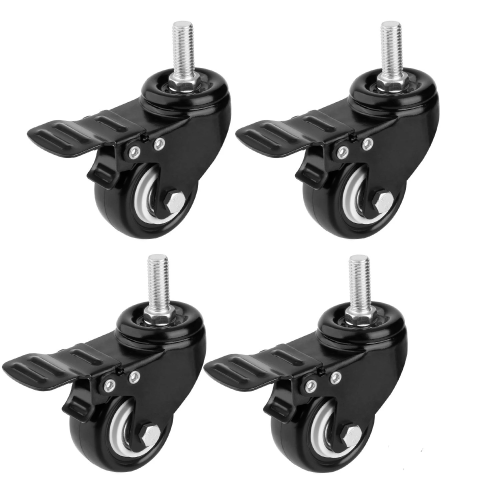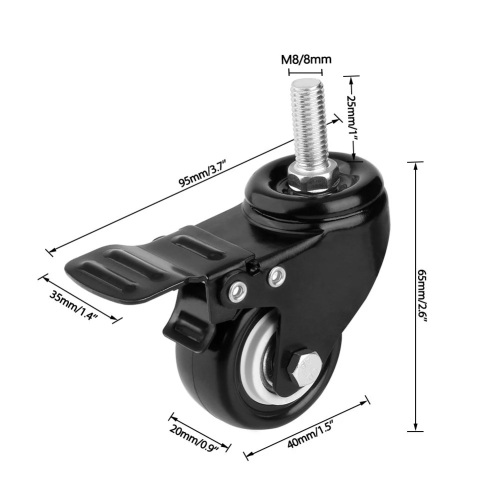Swivel casters, those small yet mighty industrial accessories, are ubiquitous in our daily lives. They find applications in everything from furniture to medical equipment and industrial machinery. But to ensure they meet your specific needs, several key factors must be considered. This article provides a comprehensive guide to help you make the right choice when selecting swivel casters.
Load Capacity
The first consideration when choosing swivel casters is the weight they’ll need to support. Different caster models come with varying load capacities. It’s essential to understand the maximum load your equipment or application requires. Once you know this figure, you can select swivel casters designed to handle the load without strain.
Wheel Material
Swivel casters come with a variety of wheel materials, each tailored to specific environments and purposes. Here are some common options:
- Rubber Wheels: These are great for providing shock absorption and a smooth, quiet ride. They work well on indoor surfaces and protect floors from damage.
- Polyurethane Wheels: These offer excellent durability, chemical resistance, and load-bearing capacity. They are suitable for heavy-duty applications and often outlast other materials.
- Nylon Wheels: Known for their strength and impact resistance, nylon wheels are ideal for industrial and outdoor applications.
- Steel Wheels: These wheels can carry extremely heavy loads and handle rough terrain, making them suitable for construction and manufacturing environments.
Choosing the right wheel material depends on your specific use case, and it’s important to consider factors like floor protection, load, and environmental conditions.
Swivel Radius
The swivel radius or swivel range of a caster determines how freely and easily it can rotate. A larger swivel radius allows for better maneuverability, making it easier to navigate tight spaces. When choosing swivel casters, consider the available space and the need for precise maneuvering.
Mounting Options
Swivel casters come with various mounting options to suit different applications. The most common types include:
- Top Plate Mount: These casters are attached to a flat surface with screws, making them suitable for a wide range of applications.
- Stem Mount: These casters are attached to a stem, which is inserted into a compatible socket. They are often used in lighter-duty applications.
- Bolt Hole Mount: These casters are secured to equipment using a bolt or a nut and are commonly used in heavy-duty applications.
When selecting swivel casters, ensure that the mounting option is compatible with your equipment and provides the required stability and mobility.
Braking Mechanisms
Depending on your needs, you may want to choose swivel casters with or without brakes. Brakes provide the ability to lock the caster in place, preventing unintended movement. This feature is especially important when working with equipment that needs to remain stationary or requires precise positioning.
Environmental Considerations
Consider the environmental conditions where your swivel casters will operate. For example, in wet or corrosive environments, it’s essential to select casters with corrosion-resistant coatings or materials to ensure longevity and performance.
Cost Considerations
Lastly, consider your budget. Swivel casters vary in price based on factors like load capacity, wheel material, and brand. While it’s essential to stay within your budget, prioritize quality and suitability for your application over cost savings, as choosing the right swivel casters can greatly impact the performance and longevity of your equipment.
In conclusion, choosing the right swivel casters involves considering load capacity, wheel material, swivel radius, mounting options, braking mechanisms, environmental conditions, and cost considerations. By carefully evaluating these factors, you can ensure that your swivel casters are not only a perfect fit but also enhance the mobility and efficiency of your equipment or furniture.


